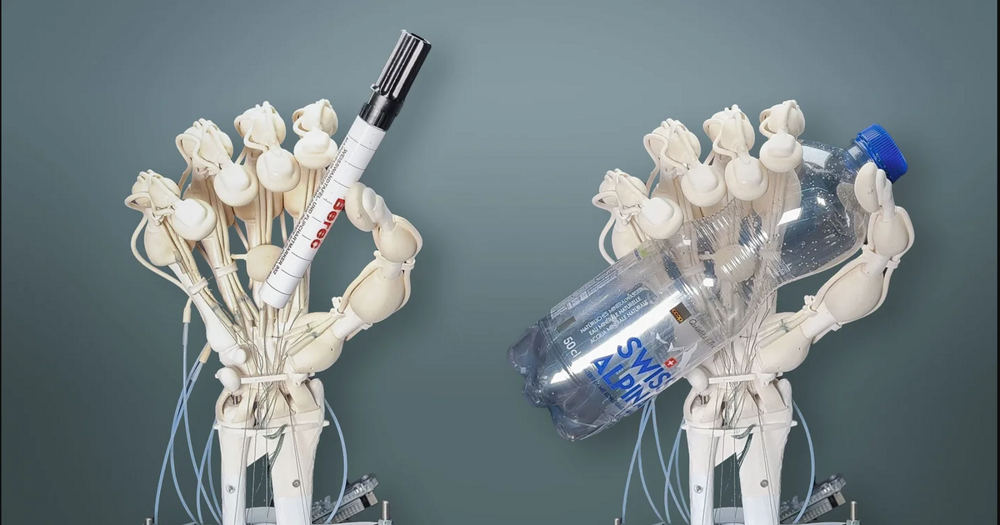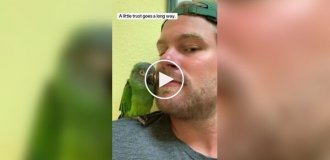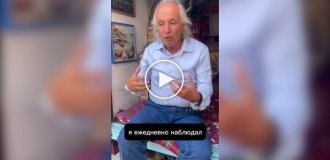The first robotic arm with bones, ligaments and tendons was printed (3 photos + 1 video)
Researchers from ETH Zurich have created the first robotic arm with bones, ligaments and tendons made from various polymers. This required improvements to 3D printing technology. 
3D printing is developing rapidly, and the range of materials used has expanded significantly. If previously the choice was limited to fast-hardening plastics, now slow-hardening materials are also suitable. They have increased elasticity, are more durable and strong.
The use of such polymers is made possible thanks to new technology developed by ETH and the American startup Inkbit. New technology makes it easy to combine soft, elastic and hard materials.
“We could not make such a hand with the fast-curing polyacrylates that were previously used in 3D printing,” explains scientist Thomas Büchner from the group of ETH robotics professor Robert Katzschmann. “We now use slow-curing thiolene polymers. They have good elasticity and are much faster.” return to their original state after bending than polyacrylates."
“Robots made from soft materials have advantages over their metal counterparts. Because they are soft, there is less risk of injury when working with people, and they are better suited for working with fragile goods,” explained Katzschman.

Conventional 3D printers produce objects layer by layer: nozzles deposit material in a viscous form at each point, then a UV lamp hardens each layer. At each stage of hardening, the device scrapes off surface irregularities. This only works with fast-curing polyacrylates. Polymers such as thiolenes and epoxy resins will clog the scraper.
To use slow-curing polymers, the researchers improved 3D printing by adding a laser scanner that checks each printed layer for irregularities.
“The device compensates for these unevenness when printing the next layer, making all the necessary adjustments in real time and with high accuracy,” says Wojciech Matusik, a professor at the Massachusetts Institute of Technology (MIT) in the US and co-author of the study.

Katzschmann's group at ETH Zurich will continue to explore the possibilities of the technology, create even more complex structures and develop additional applications. The founders of the startup Inkbit, a subsidiary of the Massachusetts Institute of Technology, intend to use the new development for commercial purposes.























